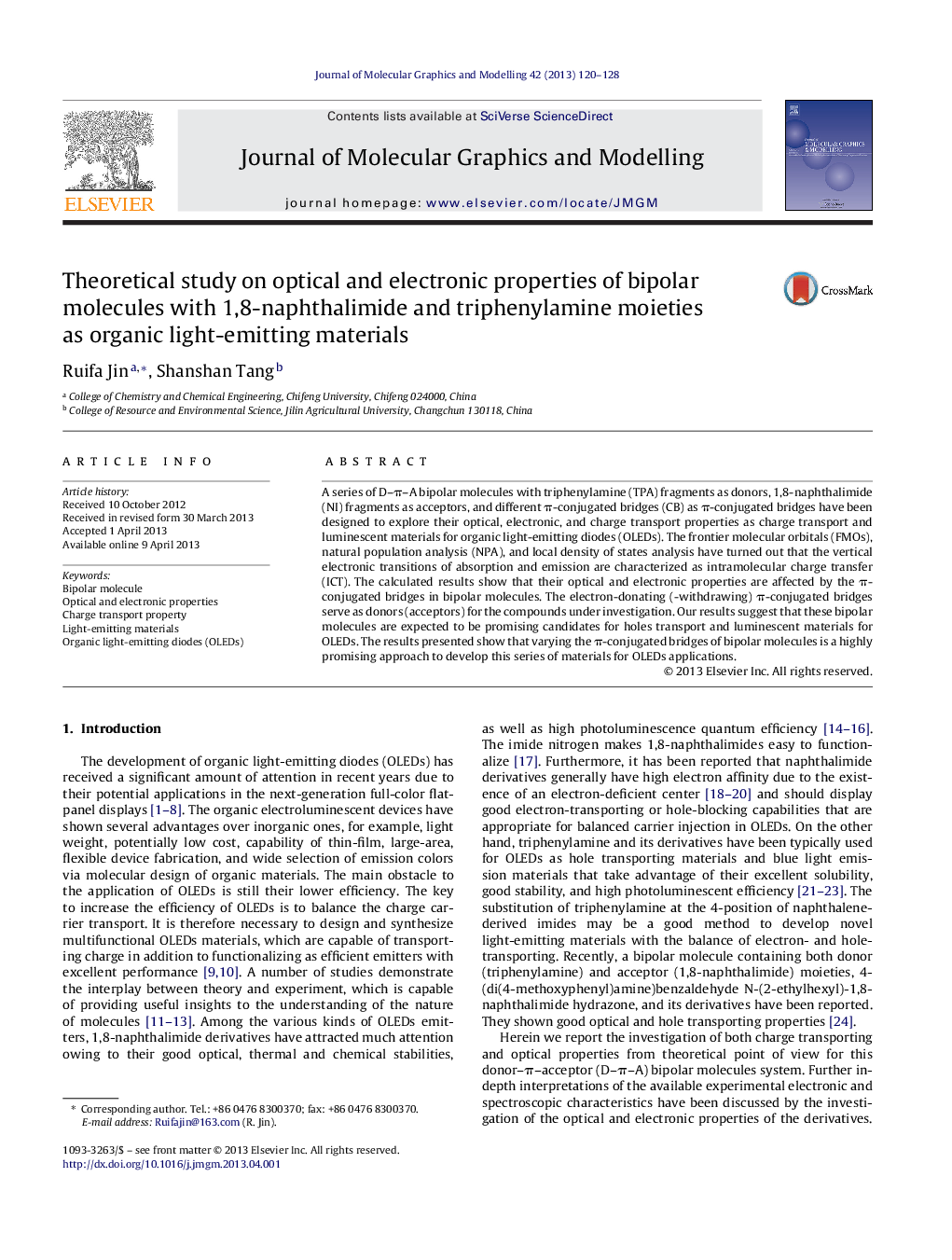| کد مقاله | کد نشریه | سال انتشار | مقاله انگلیسی | نسخه تمام متن |
|---|---|---|---|---|
| 444293 | 692961 | 2013 | 9 صفحه PDF | دانلود رایگان |

• A series of D–π–A type bipolar molecules is investigated.
• Optical and electronic properties are affected by π-conjugated bridges.
• The different π-conjugate bridges do not significantly affect the stability of molecules.
• All derivatives are promising hole transport and luminescent materials for OLEDs.
A series of D–π–A bipolar molecules with triphenylamine (TPA) fragments as donors, 1,8-naphthalimide (NI) fragments as acceptors, and different π-conjugated bridges (CB) as π-conjugated bridges have been designed to explore their optical, electronic, and charge transport properties as charge transport and luminescent materials for organic light-emitting diodes (OLEDs). The frontier molecular orbitals (FMOs), natural population analysis (NPA), and local density of states analysis have turned out that the vertical electronic transitions of absorption and emission are characterized as intramolecular charge transfer (ICT). The calculated results show that their optical and electronic properties are affected by the π-conjugated bridges in bipolar molecules. The electron-donating (-withdrawing) π-conjugated bridges serve as donors (acceptors) for the compounds under investigation. Our results suggest that these bipolar molecules are expected to be promising candidates for holes transport and luminescent materials for OLEDs. The results presented show that varying the π-conjugated bridges of bipolar molecules is a highly promising approach to develop this series of materials for OLEDs applications.
Theoretical investigations show that the bipolar molecules are expected to be promising candidates for holes transport and luminescent materials for OLEDs.Figure optionsDownload high-quality image (90 K)Download as PowerPoint slide
Journal: Journal of Molecular Graphics and Modelling - Volume 42, May 2013, Pages 120–128